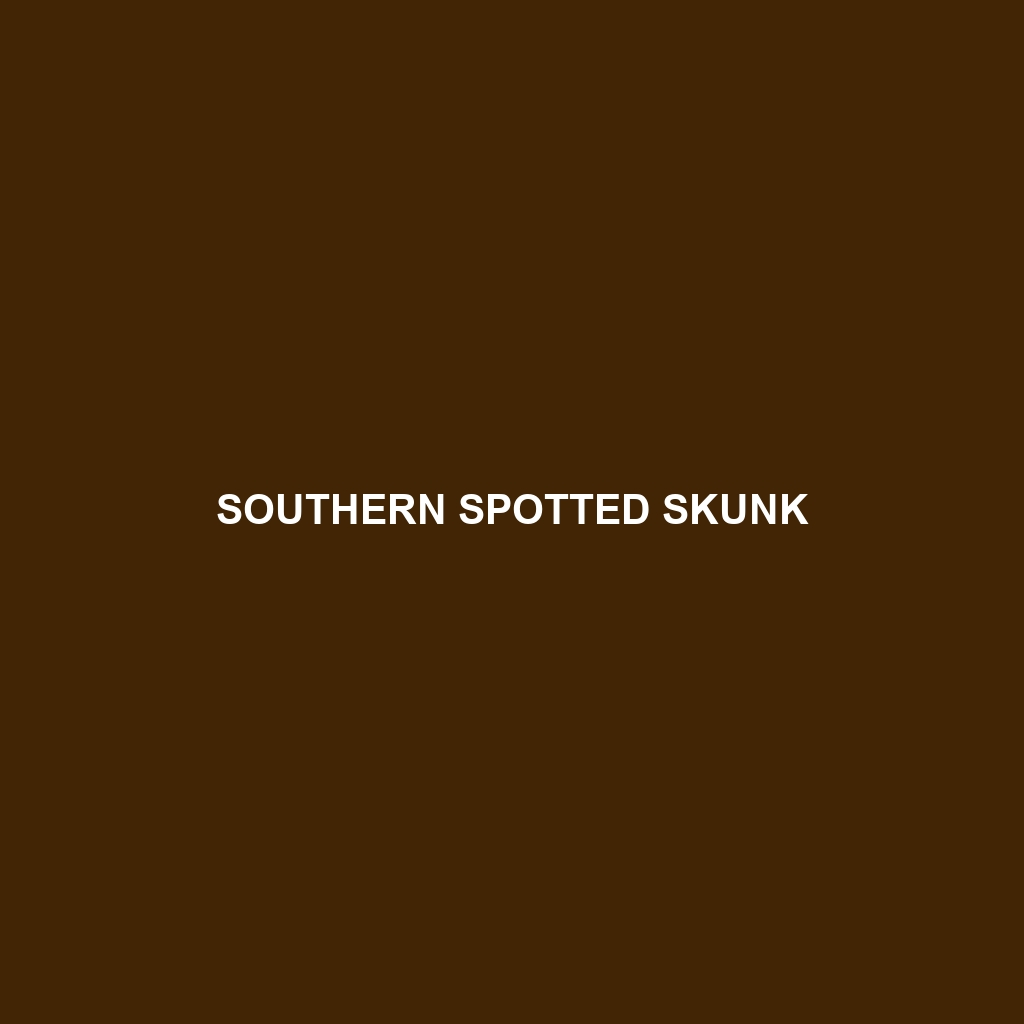Striped Skunk (Mephitis mephitis)
Common Name: Striped Skunk
Scientific Name: Mephitis mephitis
Habitat
The Striped Skunk is primarily found across North America, inhabiting a variety of environments including forests, grasslands, and suburban areas. They prefer regions with dense cover and easily accessible food sources, thriving in both rural and urban settings. Geographically, their range extends from southern Canada through the United States to northern Mexico, showcasing their adaptability to diverse climates and habitats.
Physical Characteristics
Striped Skunks are medium-sized mammals exhibiting distinctive black and white fur patterns. Adult skunks typically range from 20 to 30 inches in length, including their bushy tails, which can add another 7 to 10 inches. Weighing between 5 to 14 pounds, they have a stout build with short legs and a round body. The most notable physical features are their characteristic white stripes running down their back, which serve as a warning to potential predators.
Behavior
Known for their notorious spray as a defense mechanism, Striped Skunks are primarily nocturnal and display solitary behavior outside of mating season. They are skilled diggers and can be seen foraging for food, often rummaging through garbage or leaf litter. Their communication includes a variety of sounds, from hisses and growls to purrs, making them intriguing subjects for wildlife enthusiasts and researchers alike.
Diet
Striped Skunks are omnivorous, with a diverse diet that includes insects, small mammals, fruits, nuts, and even carrion. They have a preference for high-protein foods such as beetles and grubs, making them beneficial for pest control. Their opportunistic feeding habits mean they frequently scavenge in urban areas, where human food waste provides additional resources.
Reproduction
Breeding occurs in late winter to early spring, with females giving birth to litters of 2 to 10 kits typically in April or May. The young are born blind and helpless, relying on their mother for nourishment and protection. As they mature, the kits will begin to accompany their mother on foraging trips, learning essential survival skills from her.
Conservation Status
The Striped Skunk is currently classified as “Least Concern” by the IUCN Red List. However, they may face threats from habitat loss and vehicular traffic. Conservation efforts focus on preserving natural habitats and reducing human-wildlife conflict to maintain stable populations.
Interesting Facts
Striped Skunks are famously known for their potent spray, which can deter predators from a distance of 10 feet. Interestingly, their scent glands can eject the foul-smelling liquid with remarkable precision, allowing the skunk to defend itself effectively. Additionally, the skunk’s black and white coloration serves as an aposematic signal, warning potential threats of its capability to spray.
Role in Ecosystem
As both predator and prey, Striped Skunks play a crucial role in maintaining ecological balance. They help control insect populations while also serving as prey for larger carnivores. By foraging for insects and small rodents, they contribute to the health of their ecosystems, promoting biodiversity and assisting with seed dispersal through their diet.
